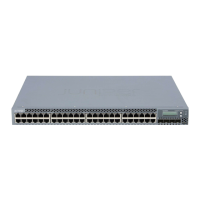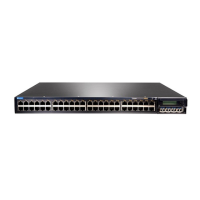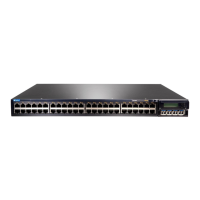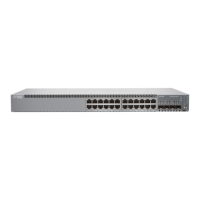Configuring Interface Ranges
To configure an interface range, include the interface-range statement at the [edit
interfaces] hierarchy level.
The interface-range statement accepts only physical networking interface names in its
definition.
Interfaces can be grouped either as a range of interfaces or using a number range under
the interface-range statement definition.
Interfaces in an interface-range definition can be added as part of a member range or as
individual members or multiple members using a number range.
To specify a member range, use the member-range statement at the [edit interfaces
interface-range name] hierarchy level.
To specify interfaces in lexical order, use the member-range start-range to end-range
statement.
A range for a member statement must contain the following:
•
*—All, specifies sequential interfaces from 0 through 47.
CAUTION: The wildcard * in a member statement does not take into
account the interface numbers supported by a specific interface type.
Irrespective of the interface type, * includes interface numbers ranging
from 0 through 47 to the interface group. Therefore, use * in a member
statement with caution.
•
num—Number; specifies one specific interface by its number.
•
[low-high]—Numbers between low to high; specifies a range of sequential interfaces.
•
[num1, num2, num3]—Numbers num1, num2, and num3 specify multiple specific
interfaces.
Example: Specifying an
Interface Range
Member Range
member-range ge-0/0/0 to ge-4/0/40;
To specify one or multiple members, use the member statement at the [edit interfaces
interface-range name] hierarchy level.
To specify the list of interface range members individually or for multiple interfaces using
regex, use the member list of interface names statement.
Example: Specifying an
Interface Range
Member
member ge-0/0/0;
member ge-0/*/*
member ge-0/[1-10]/0;
member ge-0/[1,2,3]/3;
67Copyright © 2015, Juniper Networks, Inc.
Chapter 2: Configuration Tasks
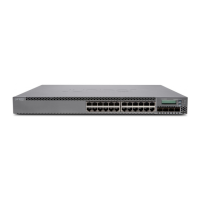
